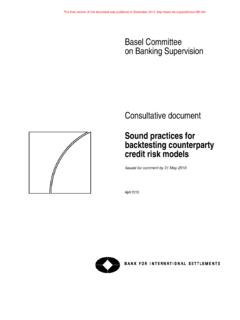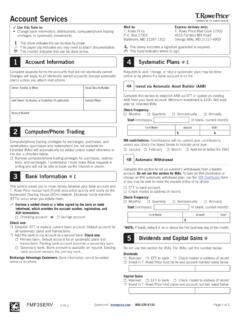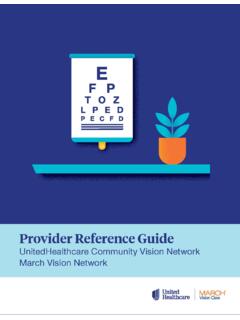Transcription of Payment, clearing and settlement systems in South Africa ...
1 CPSS Red Book 2012 373 Payment, clearing and settlement systems in South AfricaSouth Africa CPSS Red Book 2012 375 Contents List of abbreviations .. 377 Introduction .. 379 1. Institutional aspects .. 379 The general institutional framework .. 379 The role of the central bank .. 379 Oversight .. 380 Provision of payment and settlement services .. 380 Cooperation with other institutions .. 380 The role of other private and public sector bodies .. 381 Banks .. 381 payments Association of South Africa .. 381 Payment clearing House (PCH) system operators .. 381 2. Payment media used by non-banks .. 382 Cash payments .. 382 Non-cash payments .. 382 Non-cash payment instruments .. 382 Non-cash payment terminals .. 385 Interchange fee regulation .. 386 3. Payment systems .. 386 General overview .. 386 Participation.
2 386 Types of transactions .. 387 Operation of the system and settlement procedures .. 387 Risk management .. 387 Pricing .. 388 Major ongoing and future projects .. 388 4. systems for post-trade processing, clearing and securities settlement .. 389 General overview .. 389 Securities settlement systems .. 390 Institutional framework .. 390 Participation .. 390 Types of transactions .. 390 Operation of the system .. 390 Risk management .. 391 Links to other systems .. 392 South Africa 376 CPSS Red Book 2012 Pricing .. 392 Major ongoing and future projects .. 393 Use of securities infrastructure by the central bank .. 393 South Africa CPSS Red Book 2012 377 List of abbreviations ATM automated teller machine BIS Bank for International Settlements BSD Banking Supervision Department CLS Continuous Linked settlement CPSS Committee on Payment and settlement systems CSD central securities depository DVP delivery versus payment EFT electronic funds transfer EFTPOS electronic funds transfer at the point of sale FSB Financial Services Board IOSCO International Organization of Securities Commissions JSE Johannesburg Stock Exchange (JSE Ltd) NPS national payment system NPS Act National Payment system Act, 1998 (Act No 78 of 1998)
3 PASA payments Association of South Africa PCH Payment clearing House RTC Real Time clearing RTGS real-time gross settlement SAFIRES South African Financial Instruments Real-Time Electronic settlement SAFE SAFIRES Front End SAMOS South African Multiple Option settlement SARB South African Reserve Bank SARB Act South African Reserve Bank Act, 1989 (Act No 90 of 1989) SFIDVP simultaneous, final and irrevocable delivery versus payment SSD self-service device SST self-service terminal SWIFT Society for Worldwide Interbank Financial Telecommunication ZAR South African rand South Africa CPSS Red Book 2012 379 Introduction South Africa , like many African countries, has varying requirements for payment systems and payment instruments. In urban areas, sophisticated first-world electronic facilities and instruments are demanded, while in remote rural areas, the predominant requirement is cash-based.
4 This is reflected in the physical payment system infrastructure implemented throughout the country. Over the past few decades, the South African national payment system (NPS) has developed steadily. In 1998, the South African Reserve Bank (SARB) introduced a more sophisticated settlement system called South African Multiple Option settlement (SAMOS). SAMOS, designed for large-value interbank transactions, was developed to bring domestic interbank settlement practices in line with international best practice and signalled the start of a new era for payment practices in South Africa . 1. Institutional aspects The general institutional framework The role and responsibilities of the SARB in the domestic payment system are governed by the South African Reserve Bank Act, 1989 (Act No 90 of 1989 the SARB Act).
5 The SARB is empowered to perform such functions, implement such rules and procedures and, in general, take such steps as may be necessary to establish, conduct, monitor, regulate and supervise payment, clearing and settlement systems . The SARB ensures the overall effectiveness and integrity of the NPS and has thus been given the power to govern the entire payment process, from the moment that the payer initiates a payment until the beneficiary receives the money. The SARB, together with the banking industry, drafted legislation for the participants in the NPS, and in October 1998 the National Payment system Act, 1998 (Act No 78 of 1998 the NPS Act) was promulgated. The purpose of the NPS Act is to provide for the management, administration, operation, regulation and supervision of the payment, clearing and settlement systems in the Republic of South Africa , and to provide for connected matters.
6 The SARB oversees the safety and efficiency of the payment system pursuant to the NPS Act. In terms of regulation, the SARB may issue directives and position papers. Directives contain binding rules to address payment system risks, while position papers contain guidelines to address payment system risks and foster sound practices within the payment system . The role of the central bank One of the roles of the SARB is to provide banking services to the central government, although this function has been scaled down since the government began holding cash balances with other banks. The SARB does not provide banking services to provincial governments, local authorities or state enterprises. The SARB is, however, responsible for the movement of government balances to, from and between other banks.
7 Such movements have an effect on banks cash holdings and therefore serve as a convenient additional instrument for managing banks liquidity. As part of its role as banker to banks , the SARB acts as custodian of the cash reserves that banks are legally required to hold or prefer to hold voluntarily with the SARB. The SARB has the authority to change banks minimum cash reserve requirements and can use such adjustments to influence bank liquidity and the amount of money in circulation. South Africa 380 CPSS Red Book 2012 The SARB provides liquidity to banks during periods of temporary shortages of cash, ie it acts as lender of last resort . The SARB also provides banks with liquidity by lending against reserved collateral to facilitate the funding of settlement instructions in SAMOS. Oversight The intensity of oversight is proportionate to the systemic or system -wide risks posed by a payment system .
8 The South African oversight model has been aligned, developed and refined to cater for the domestic payment system , and at the same time adheres to international best practice. The scope of the South African oversight function includes banks and non-bank participants. Developments in the area of payment products, notably innovations such as mobile banking and electronic money, are also carefully monitored. Oversight thus keeps track of both traditional providers of payment products in the South African market and newcomers. Through continuous monitoring, performance statistics, risk management reports and specific compliance requirements, participants are monitored and analysed for exceptions or problems. Provision of payment and settlement services The only assets used to settle interbank obligations by payment system participants are central bank money in the form of either cash or the passing of entries across the books of the SARB.
9 The SAMOS system is a subset of the general ledger of the SARB and any entries passed are final and irrevocable under the NPS Act. SAMOS has a high degree of security, operational reliability and contingency arrangements in place. Security policies include the security and network architecture. The security solutions are maintained and upgraded as the technology changes and international, national and industry standards are raised. On the operational level, service levels and the accompanying service level agreements are matched to the changes required. SAMOS is the only settlement system in South Africa and is owned and operated by the SARB. Cooperation with other institutions The SARB is a member of various committees at the Bank for International Settlements (BIS), including the Committee on Payment and settlement systems (CPSS).
10 The SARB is represented in numerous BIS working groups. The SARB also has formal relationships with and participates in various projects and initiatives with other international institutions, such as the World Bank and the International Monetary Fund. There has been ongoing cooperation and interaction with the Continuous Linked settlement (CLS) Bank since the inclusion of the South African rand (ZAR) in the CLS system . Close cooperation is maintained with the Banking Supervision Department (BSD) of the SARB as payments are primarily made from funds on deposit. South Africa CPSS Red Book 2012 381 The role of other private and public sector bodies Banks Banks issue various payment instruments to their customers to effect transactions including, among other things, financial market transactions as well as day-to-day purchases of goods and services.
















